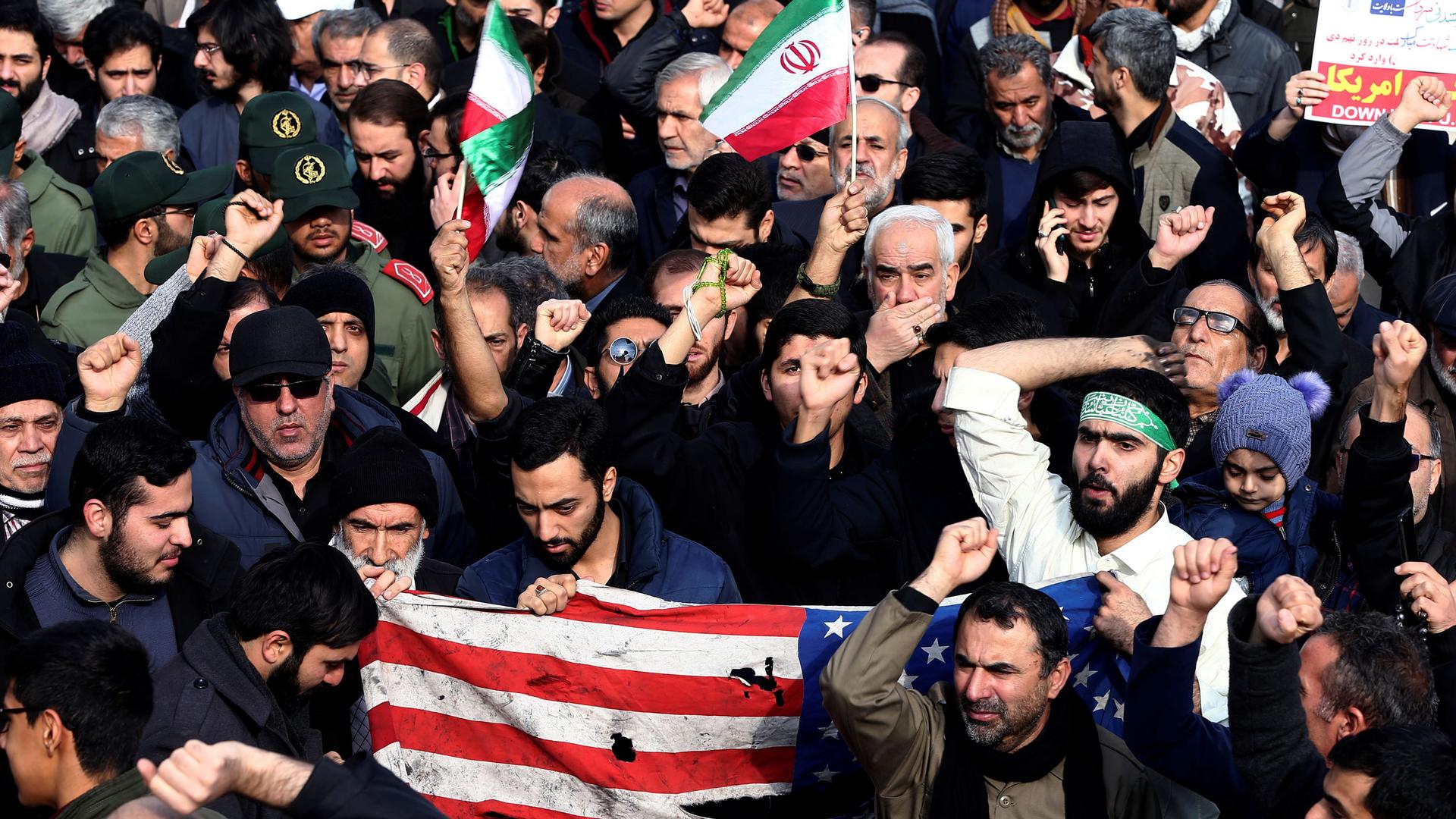The history of US-Iran relations: A timeline
Demonstrators attend a protest against the assassination of the Iranian Major-General Qasem Soleimani, head of the elite Quds Force, and Iraqi militia commander Abu Mahdi al-Muhandis who were killed in an air strike in Baghdad airport, in Tehran, Iran, Jan. 3, 2020.
US President Donald Trump authorized an overnight airstrike in Baghdad that killed Iran’s top general, Qasem Soleimani on Friday, Jan. 3. Soleimani was the second most powerful person in Iran, following Supreme Leader Ayatollah Ali Khamenei. He was also behind Iran’s growing influence in the region.
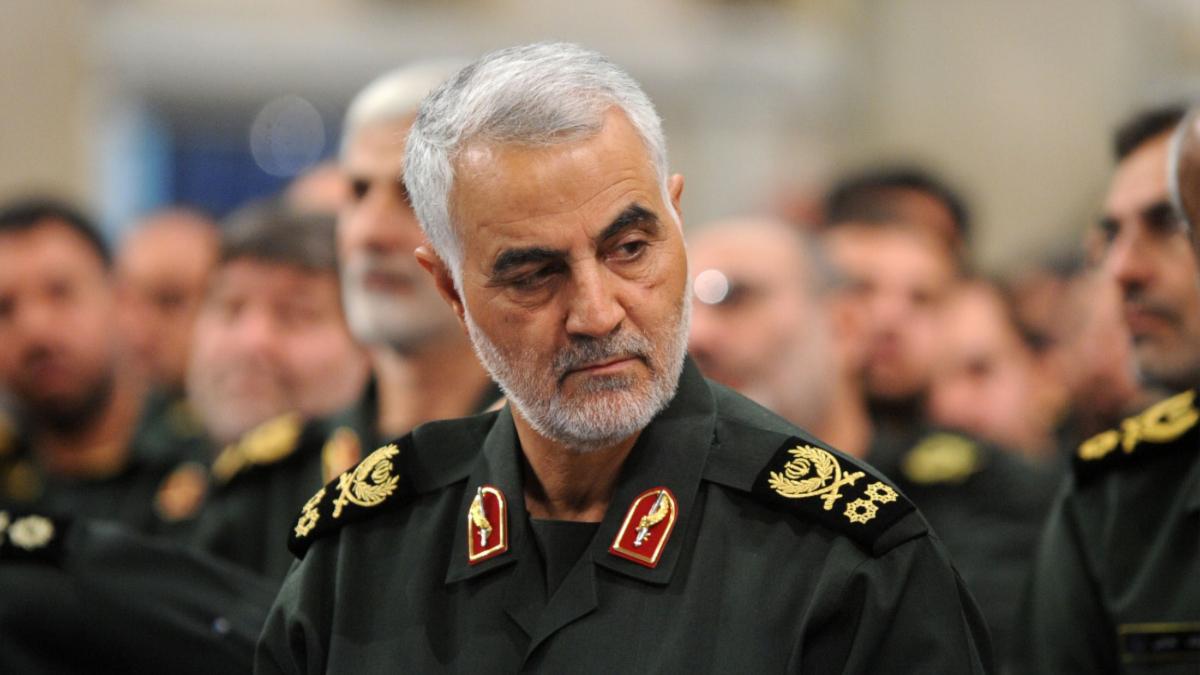
The strike came after the Iran-backed Kataib Hezbollah militia attacked the US Embassy in Iraq on Dec. 31. Kataib Hezbollah was founded by Abu Mahdi al-Muhandis, an adviser to Soleimani who was also killed in the attack.
Related: US airstrike kills top Iranian commander
Trump issued the airstrike without Congressional approval or authorization of military force against Iran, and many experts said they fear this assassination could spark further violence and military escalation. Iran threatened Friday to respond harshly, and the US deployed thousands of additional troops to the region.
Despite some periods of cooperation, the US and Iran have long been in conflict. Indeed, the longest currently active US national emergency concerns sanctions on Iran issued by former President Jimmy Carter in 1979. But significant US involvement dates back to 1953, when the US orchestrated a coup to overthrow Iran’s prime minister. Here’s a brief timeline of major events in US-Iranian relations.
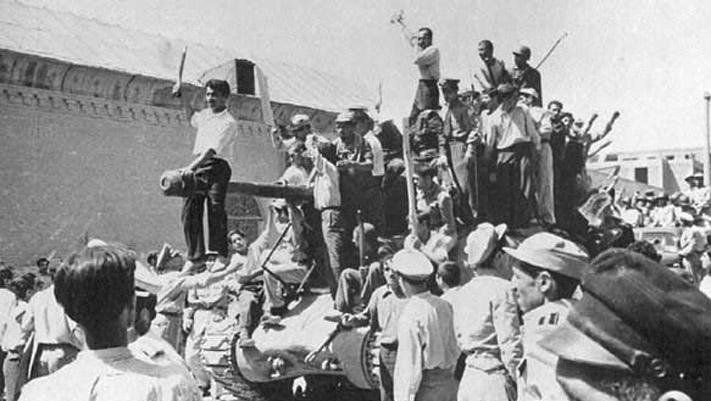
Related: Iran debates suing US over Mossadegh coup in 1953
1953: The coup
US and British intelligence agencies orchestrate a coup, overthrowing democratically elected Prime Minister Mohammed Mossadegh and restoring power to the Shah, Mohammed Reza Pahlavi. As prime minister, Mossadegh worked to nationalize Iranian oil against British interests, which had exploited the country’s resources for decades. Failing to bend Mossadegh’s will, the British worked to bring about his outster, enlisting US support. With the help of a few key Iranians, they unleashed a propaganda campaign against the prime minister and persuaded the Shah to participate in the coup. Eventually, the coup was hailed in Washington as a success — but it sowed strong resentment and distrust against the US, and set Iran from the path toward democracy to that of a dictatorship.
Related: The US and Iran part I – the 1953 coup
1957: Nuclear cooperation
The US and Iran sign the Cooperation Concerning Civil Uses of Atoms, a civilian nuclear cooperation agreement, through the Atoms for Peace program. An initiative of US President Dwight Eisenhower, the program shared nuclear technology and education with states around the world — including Israel, Pakistan and Iran. The program provided Iran with the foundation for its current, highly controversial nuclear program.
1959: Nuclear research
Reza Shah Pahlavi opens the Tehran Nuclear Research Center at the University of Tehran and begins seeking materials and technology from the US.
1967: Nuclear materials
The US provides Iran with a five-megawatt nuclear reactor and weapons-grade enriched uranium fuel.
1968: Nuclear non-proliferation
Iran becomes a signatory to the Treaty on the Non-Proliferation of Nuclear Weapons, ratified in 1970. In exchange for a commitment to not acquire nuclear weapons, Iran is permitted to maintain a civil nuclear program.
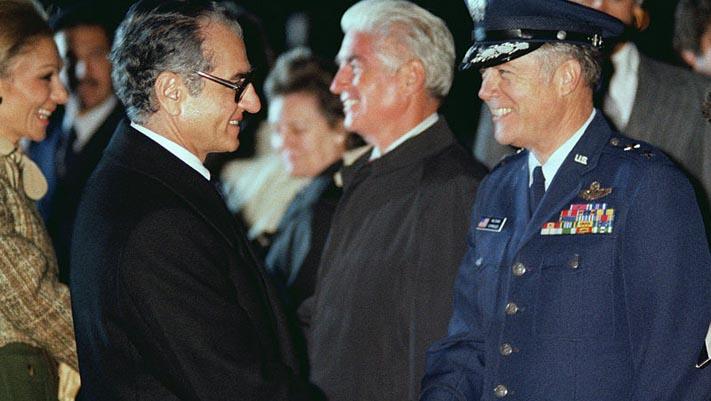
1963-1973: Decade of growth
In the aftermath of the coup, the US pours resources into Iran, shoring up its military and political power. Iran enjoys a decade of impressive economic growth in the 1960s and 70s. But the Shah’s autocracy grows as well, espoused in his notorious secret police, SAVAK, which grew out of CIA training.
In 1972, US President Richard Nixon visits the Shah to ask him to guarantee US security interests in the region, allowing Iran to buy any weapon system it wants in return. As the 1973 Arab-Israeli War sent oil prices surging, the Shah buys huge quantities of high-tech weaponry. US officials are unsettled but have no alternative plan.
In the background, resentment against the Shah — and the US — is building through mosques. Ayatollah Ruhollah Khomeini is key to this religious opposition and is sent into forced exile in 1964, and eventually settles in Iraq. But he continues to preach against the Shah and the US; his sermons are smuggled into Iran. The US doesn’t take religious opposition seriously at the time — which proves to be a serious mistake.
Related: The US and Iran part II – the Shah and the revolution
1977-1978: Carter’s visit
Carter visits Iran on New Year’s Eve, toasting the Shah and demonstrating how out of touch America is with the realities on the ground. “Iran, because of the great leadership of the Shah, is an island of stability in one of the more troubled areas of the world,” Carter said. “This is a great tribute to you, your Majesty, and to your leadership, and to the respect and the admiration and love which your people give to you.”
Within days, the first of the demonstrations that would culminate in the revolution begin. A popular movement with widespread appeal emerges with Khomeini at its head.
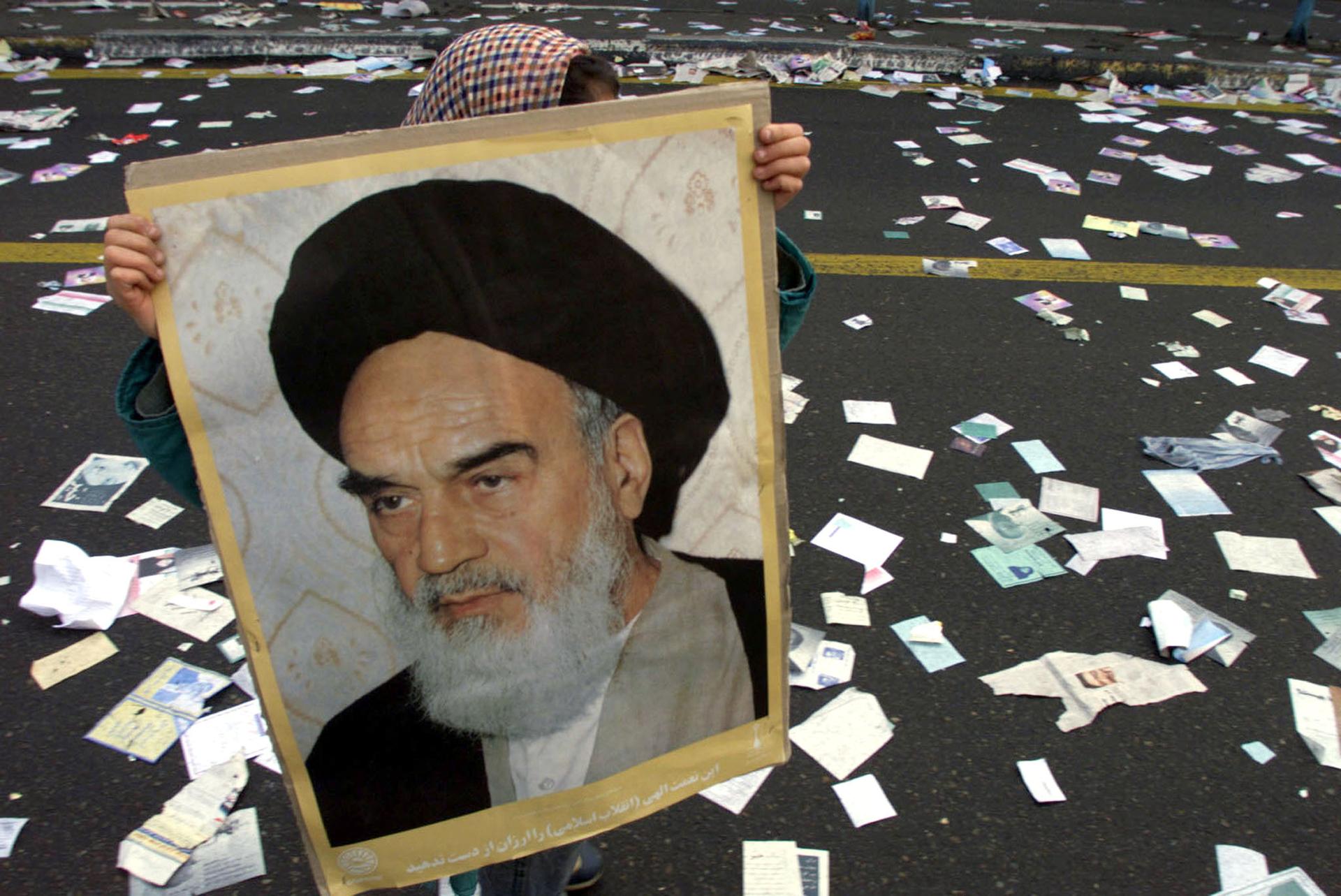
September 8, 1978: Black Friday
Government troops open fire on demonstrators in Jaleh Square in downtown Tehran. Hundreds of people are killed. The US is distracted by a Camp David summit over the Arab-Israeli War and can do little to stem the momentum of the revolution.
1979: Iranian Revolution
On January 16, 1979, the Shah announces he is leaving Iran to go on vacation. The Iranian people react as if it is the end of his reign. Before leaving, he appoints Shapour Bakthiar from the opposition as prime minister. But Iranians continue their mass protests.
From France, Khomeini speaks about his plans for an Islamic republic. On February 1, 1979, just weeks after the Shah leaves, Khomeini makes a triumphant return to Iran to a crowd of millions. Within days, revolutionaries are in control of the military, ministries and media. The Islamic Republic of Iran becomes official April 1, following an overwhelmingly popular referendum.
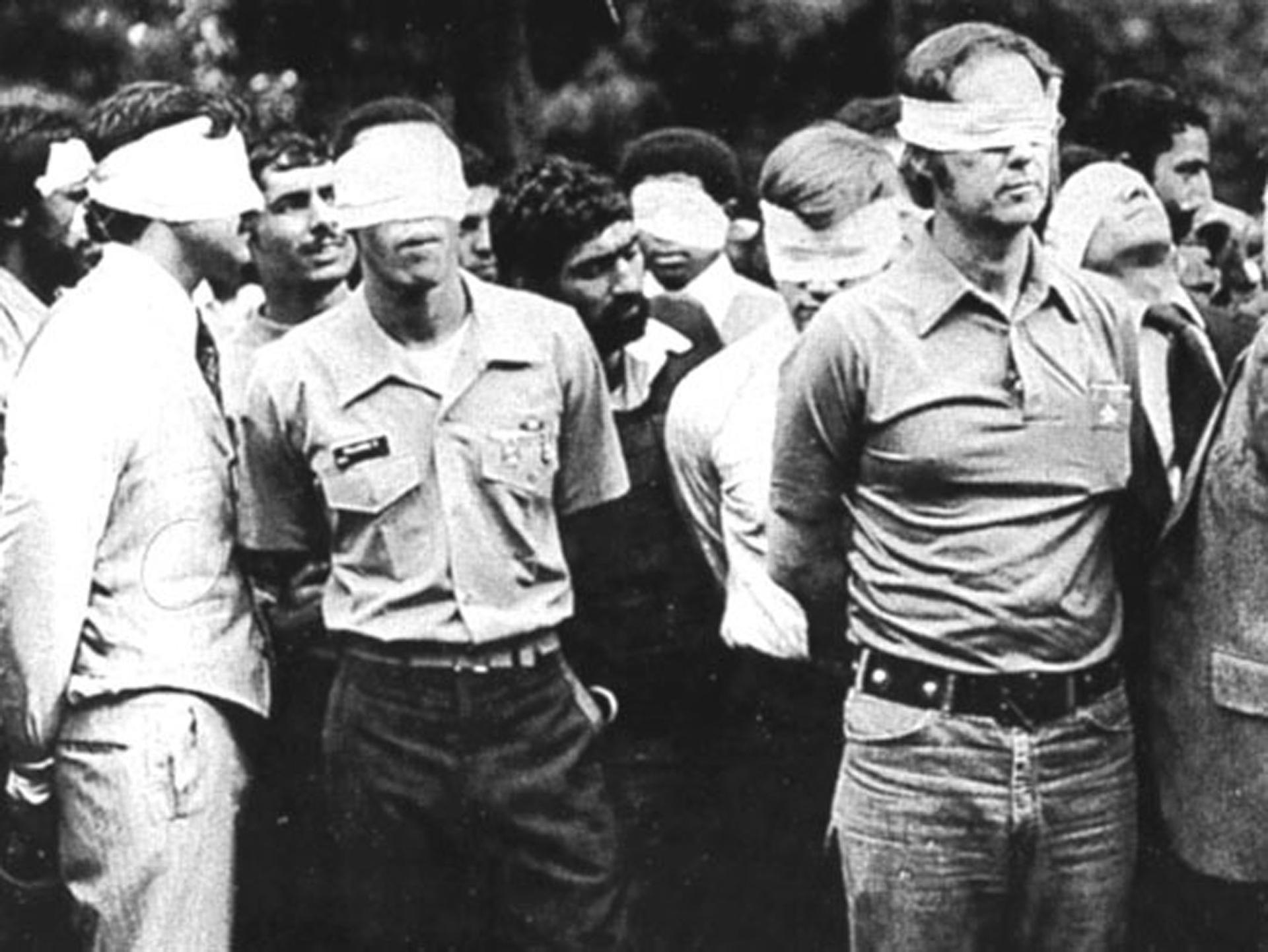
1979-1981: Iran hostage crisis
After a brutal revolution, the US and Khomeini’s pick for prime minister, the relatively moderate Medhi Bazargan, work to normalize relations. But in the fall of 1979, Carter allows the Shah — who is dying of cancer — to enter the US for medical treatment. Though assured it was a humanitarian gesture — not a political one — Iranians who supported the revolution feared a new conspiracy between the US and the Shah.
Related: The US and Iran part III – the hostage crisis
On Nov. 4, 1979, a mob of students overruns the US embassy in Tehran, taking 66 American diplomats and marines hostage. Khomeini backs the hostage-takers, but 13 are released after a short period of time, many women and African Americans — those who Khomeini says already face “the oppression of American society.” Another is released for health reasons. The students demand the US turn the Shah over for trial and threaten to put hostages on trial. Fearing another coup, one of their goals is to sabotage the relationship between Tehran and Washington.
Related: Iran calls Oscar for ‘Argo,’ awarded by Michelle Obama, an ad for CIA
Carter imposes sanctions on Iran and freezes $12 billion in Iranian assets. He appeals to the UN, but international condemnation yields little. In April, five months after the embassy is seized, Carter breaks off diplomatic relations. An attempted rescue mission fails, killing eight American crewmen.
In January 1981, Carter announces that the US and Iran have agreed on a settlement. But the hostage crisis has irrevocably damaged the Carter presidency. The final Americans are allowed to return home only on the day of US President Ronald Reagan’s inauguration after 444 days in captivity. Iran becomes a pariah state.
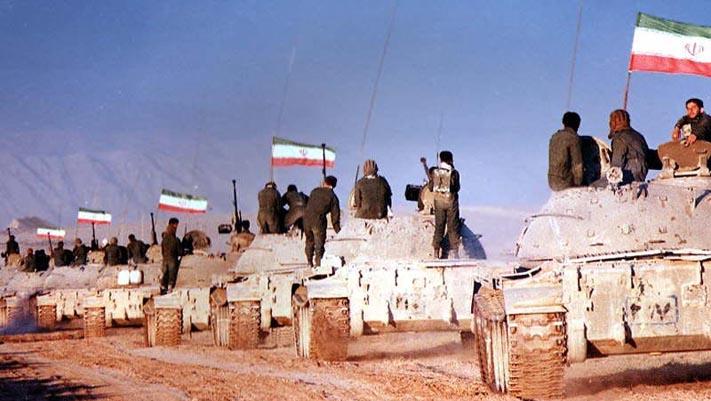
1980-1988: Iran-Iraq War
Iraq, hoping to capitalize on chaos in Iran, starts the war in 1980. The US fears Iranians will be able to defeat Iraq and continue a takeover of the region. The Reagan administration provides Baghdad with intelligence and resources. When Iraq uses chemical weapons against Iran, the US condemns the action, but continues to support Saddam Hussein.
1984: Sponsor of terrorism
The US designates Iran a state sponsor of terrorism and unleashes severe sanctions. The CIA documents more than 60 Iran-backed attacks against the US, France and moderate Arabs in 1984, including an attack on the US Embassy in Lebanon.
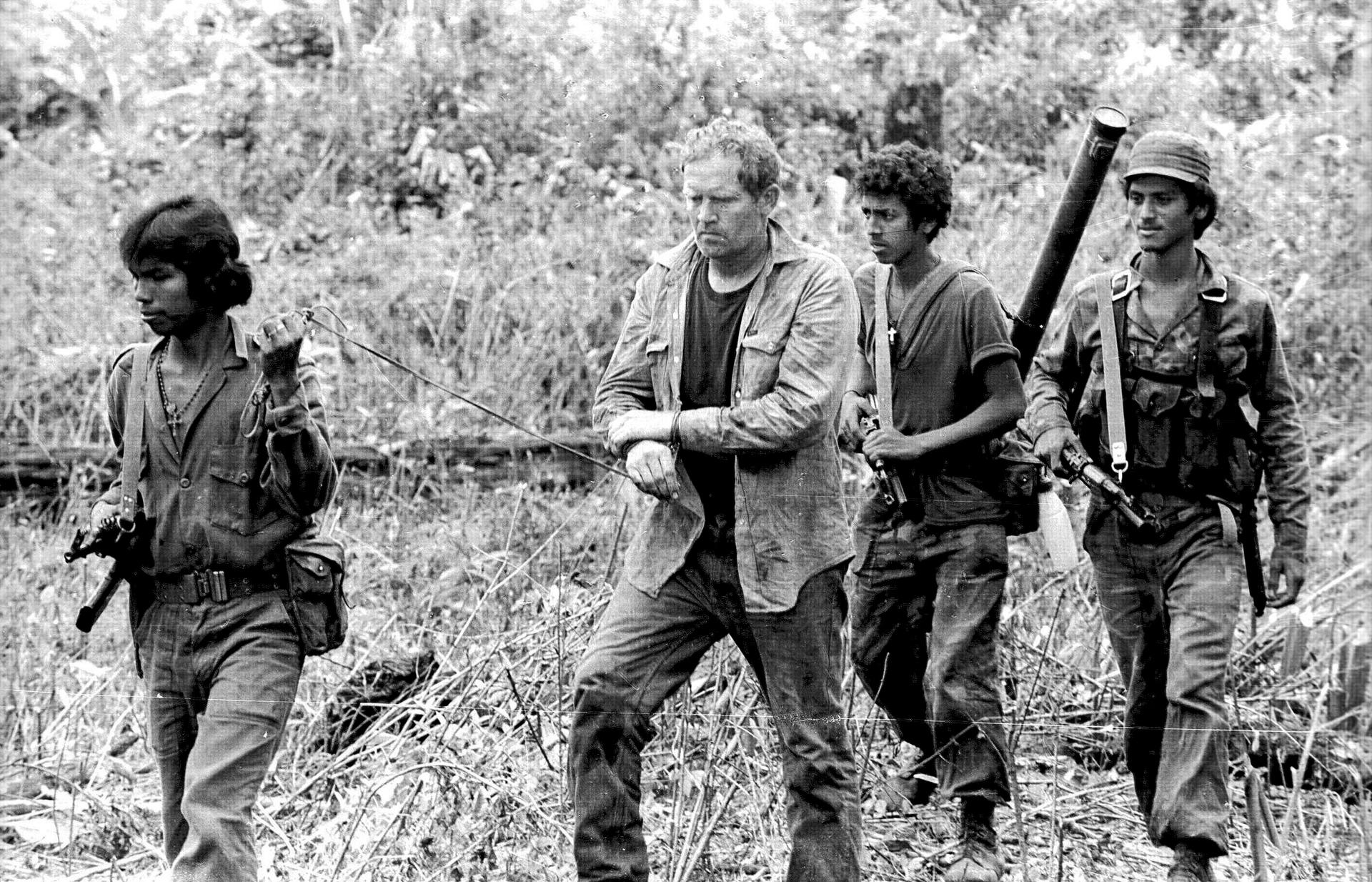
1985-1986: Iran-Contra affair
Despite an arms embargo, Reagan administration officials continues to sell weapons to Iran, allegedly to secure the release of hostages in Lebanon. The revenue from the weapons sales circumvent US Congress to fund Contra guerrillas fighting against the left-wing Sandinista government in Nicaragua in a US effort to stop the spread of socialism in Latin America. The scandal later becomes known as the Iran-Contra affair and Reagan administration officials are charged with lying to Congress about the backdoor efforts to sell weapons to Iran.
Related: Iran-Contra Remembered
July 3, 1988: Passenger plane downed
In the midst of a skirmish with Iranian ships in the Persian Gulf, US Navy Vincennes warship shoots down Iran Air Flight 655. The Airbus A300 is a passenger plane carrying many pilgrims on their way to Mecca. All 290 people on board are killed. Americans say the large plane was mistaken for an F-14 fighter jet.
1992-1997: US sanctions ramp up
In 1992, Congress passes the Iran-Iraq Arms Nonproliferation Act, imposing sanctions on goods or technology that could contribute to advanced weaponry. In 1996, Congress passes the Iran-Libya Sanctions Act, later known as the Iran Sanctions Act, penalizing investments in Iran’s petroleum industry. In the mid 1990s, US President Bill Clinton issues executive orders that expand sanctions and generally ban the exchange of goods and services between the US and Iran.
Related: The US and Iran part IV – hostile relations
1997-2000: Signs of change?
Reformist cleric Mohammed Khatami is elected president in Iran in May 1997, an event Clinton calls “hopeful.” Reformers in Iran continue to make gains in elections. Secretary of State Madeline Albright makes a groundbreaking speech in 2000, acknowledging the US role in the 1953 coup and “shortsighted” foreign policy in the region, as well as announcing steps to allow some trade. But hardliners in Tehran rejected Albright’s overture and the Clinton initiative fizzled out.
2001-2002: 9/11 and the ‘Axis of Evil’
After the terrorist attacks in the US, the Bush administration establishes a back channel with Iran against a mutual enemy: the Taliban. But in 2002, US President George W. Bush includes Iran as part of the “Axis of Evil” in his State of the Union. Later, international inspectors confirm Iran has enriched uranium. Iran says it is being used for energy capabilities, not weapons.

2000s: Nuclear negotiations and sanctions
The decade continues with international negotiations and sanctions against hardliner Iranian President Mahmoud Ahmadinejad. In 2006, Washington says it is willing to join multilateral nuclear talks with Iran if it verifiably suspends nuclear enrichment.
2009: Obama takes office
US President Barack Obama takes office and tells Iran’s leaders he would extend a hand if they would “unclench their fist” and persuade the West they were not trying to build a nuclear bomb. Britain, France and the United States announce that Iran is building a secret uranium-enrichment site at Fordow, near the city of Qom. Iran says it disclosed the site to the UN nuclear watchdog earlier in the week.
Related: This timeline explains the long, bumpy road to the Iran nuclear deal
2009-2012: Stalled
Nuclear negotiations between major powers and Iran largely stall.
2012-2013: Economic downturn and upturn in negotiations
US law goes into effect giving Obama the power to sanction foreign banks, including the central banks of US allies, if they fail to significantly reduce their imports of Iranian oil. The result is a drastic reduction in Iranian oil sales and a sharp downturn in the Iranian economy.
US and Iranian officials begin secret talks, which intensify in 2013, on the nuclear issue.
Pragmatist Hassan Rouhani is elected Iran’s president on a platform of improving Iran’s relations with the world and its economy, something that can only be achieved by easing sanctions. On Sept. 28, Obama and Rouhani speak by telephone in the highest-level contact between the two countries in three decades.
On Nov. 23, with the groundwork laid by the secret US-Iran talks, Iran and six major powers reach an interim pact called the Joint Plan of Action (JPOA) under which Iran agreed to curb its nuclear work in return for limited sanctions relief. The six powers are the United States, Britain, China, France, Germany and Russia.
Related: Iran and the US learn how to flirt, diplomatically
2015: JCPOA
On July 14, Iran and the six powers strike an agreement, under which Iran agreed to take a series of steps, including slashing its number of centrifuges and disabling a key part of its Arak nuclear reactor — in return for significant easing of US, UN and EU sanctions.
The deal is called the Joint Comprehensive Plan of Action (JCPOA).
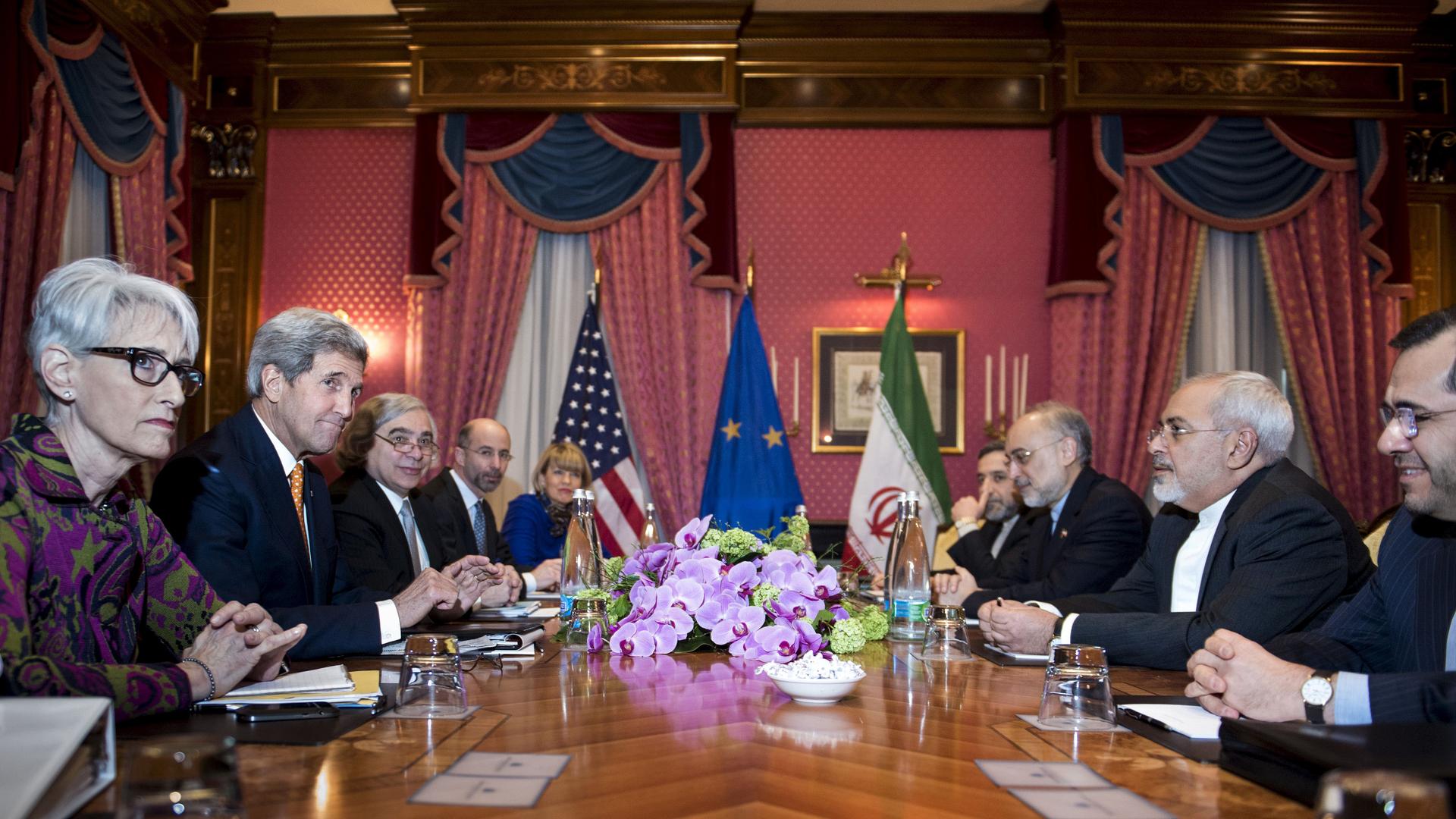
Related: In nuclear negotiations, diplomacy can be a slog
2016: Sanctions lift
On Jan. 14, Iran releases 10 US sailors, who ended up in Iranian territorial waters on two small boats, less than 24 hours after Iran took them into custody. On Jan. 16, the United States and Iran announce a prisoner swap. Four Americans imprisoned in Iran are freed in return for clemency for at least seven Iranians, most of whom are dual U.S.-Iranian nationals, who were convicted or awaiting trial in the United States. A fifth American is released separately.
Later, the International Atomic Energy Agency confirms Iran had taken steps to restrict its nuclear activities required under the JCPOA. The United States lifts nuclear-related sanctions on Iran.
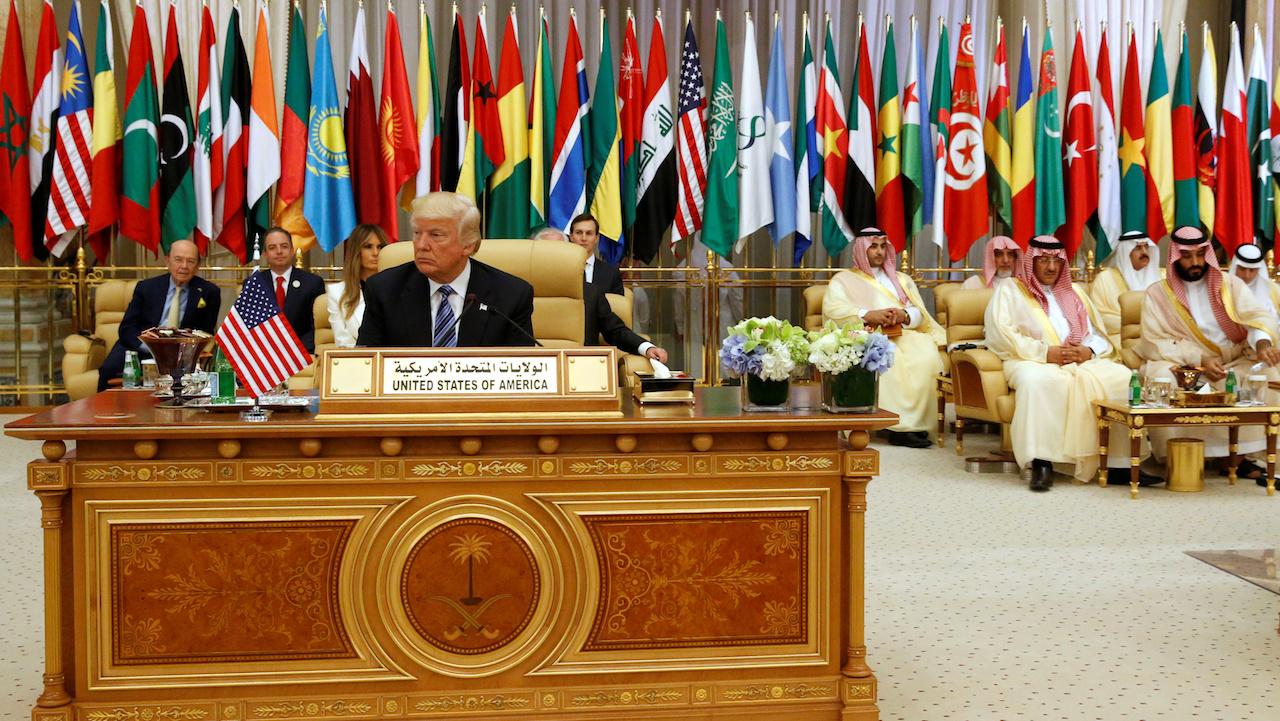
2017: Trump administration
US President Donald Trump makes a speech holding Iran responsible for global extremism in Riyadh, Saudi Arabia, on his first foreign visit since taking office.
Related: End of Iran nuclear deal cuts major diplomatic channel for Americans imprisoned in Iran
2018: Trump walks away from Iran deal
US President Donald Trump announces he is walking away from the Iran nuclear deal and reimposes crippling sanctions. Trump says the deal did nothing to limit Iran’s ballistic missile program or its regional aggressions.
Related: The end of the Iran nuclear deal is hurting American businesses
2019: Iranian aggression goes unchecked
In April, the US designates the Islamic Revolutionary Guard Corps a “terrorist organization.”
Related: Calling the Iranian Revolutionary Guard a ‘terrorist organization’ is risky, but nothing new
In May, exactly one year after Trump pulls the US out of the Iran nuclear deal, Iran announces Wednesday that it will relax some of the curbs the deal imposed on its nuclear program.
Related: Nuclear deal rollback won’t get Iran a weapon, but it’s not an empty threat
Throughout the spring and summer, Iran carries out a series of attacks on oil tankers in the Persian Gulf region. It is also believed to be behind the September attacks on oil installations in Saudi Arabia.
In December, attacks on US military bases in Iraq kill a US citizen. The US blames an Iranian-backed militia inside Iraq, and fires on its bases in retaliation.
Iranian backed militias protest outside the US Embassy in Baghdad, storming the security post.
Related: Kataib Hezbollah attacked the US Embassy in Baghdad. Who are they?
Jan. 3, 2020: Commander killed
Trump authorizes an airstrike that kills Iranian Gen. Qasem Soleimani without congressional approval.
Editor’s note: A previous version noted 55 hostages released after Reagan’s innaguration; 52 hostages were held 444 days and released when Reagan entered the White House. Others were released prior.
The World’s Jeb Sharp and Shirin Jaafari contributed reporting. Reuters contributed to this report.
